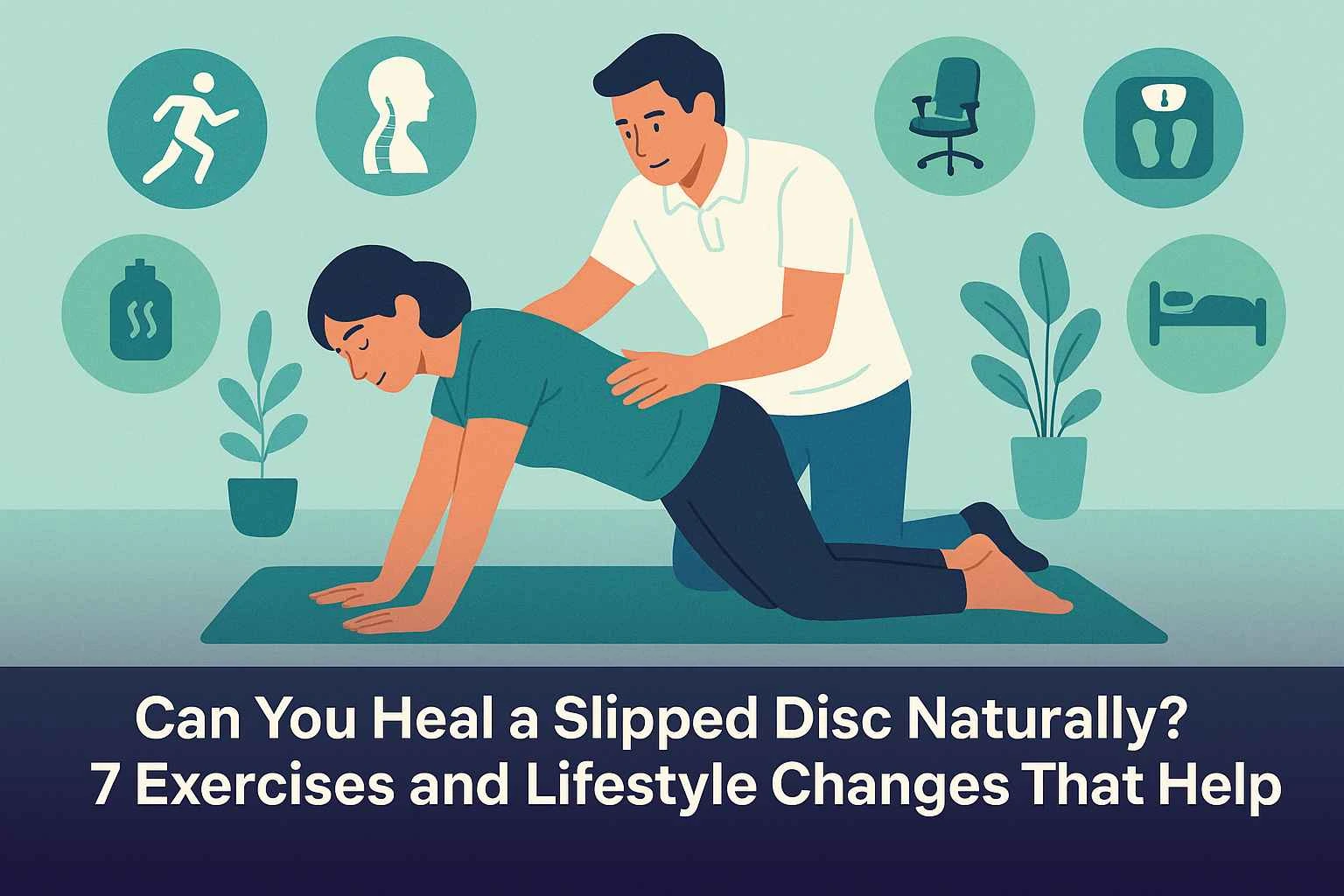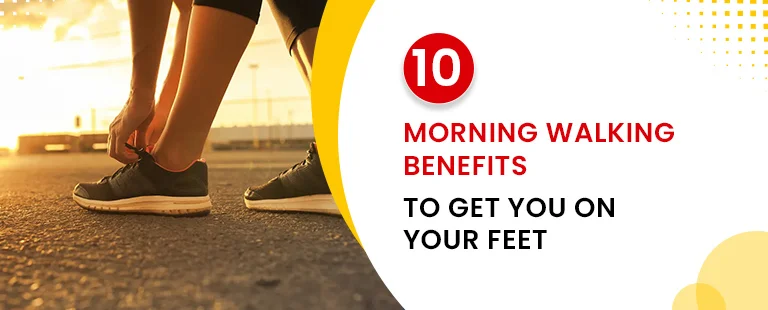That sudden, intense pain in your lower back. The shooting sensation down your leg that makes it hard to sit, stand, or even think straight. If you're dealing with a slipped disc, you know this pain is more than just an inconvenience—it's a debilitating condition that can bring your life to a grinding halt. When you're in the thick of it, one question echoes louder than any other: “Will this ever get better without surgery?”
For many people in Hyderabad and beyond, the answer is a resounding yes.
A slipped disc, also known as a herniated or prolapsed disc, happens when the soft, gel-like centre of a spinal disc pushes out through a tear in its tougher exterior, often pressing on a nearby nerve. While it sounds alarming, the human body has a remarkable capacity for healing.
The majority of slipped disc cases can resolve naturally with the right care and commitment.
This guide is designed to empower you with knowledge and practical steps to support your body's healing process. We will explore the safe exercises and crucial lifestyle adjustments that form the foundation of conservative care. However, it's equally important to understand when these natural methods aren't enough and when it's time to seek expert slip disc treatment in Hyderabad.
Understanding Your Slipped Disc: What's Really Happening in Your Back?
Before we dive into solutions, it's important to understand the problem. Knowledge is the first step toward taking control of your recovery. Many patients feel anxious simply because they don't understand the diagnosis they've been given. Let's demystify it.
A Simple Explanation of a Herniated Disc
Imagine the discs in your spine are like little jam-filled doughnuts, sitting between the bony building blocks of your spine (the vertebrae).
- The Doughnut: This is the tough, fibrous exterior ring of the disc, known as the annulus fibrosus.
- The Jam: This is the soft, gel-like centre,
called the nucleus pulposus.
These discs act as shock absorbers, letting your spine to bend and twist. A "slipped disc" happens when a
tear in the tough outer ring allows some of the soft "jam" to squeeze out. This bulging material can
then press on the spinal cord or, more commonly, the sensitive nerve roots that exit the spine at each
level.
This nerve pressure is what causes the classic symptoms:
- Localized Pain: A dull discomfort or sharp pain at the site of the herniation (usually the lower back or neck).
- Radiating Pain (Sciatica): A sharp, shooting, or burning pain that travels from your lower back, through your buttock, and down your leg. This is a hallmark of a lumbar (lower back) slipped disc pressing on the sciatic nerve.
- Numbness or Tingling: A "pins and needles" feeling in the area the affected nerve supplies.
- Muscle Weakness: Difficulty lifting your foot
("foot drop") or weakness in your leg or arm muscles.
The Good News: Your Body's Amazing Capacity to Heal
Here is the most important message of hope we can offer: for most people, a slipped disc is not a life
sentence of pain. In fact, a landmark review of studies shows that the vast majority of patients—often
cited as 80-90%—experience significant improvement within a few weeks to several months without ever
needing surgery.
How does this happen?
- Inflammatory Response: The body mounts an immune response to the herniated disc material, treating it like a foreign substance. This inflammation, while painful initially, helps break down and shrink the protruding part of the disc.
- Reabsorption: Over time, the body can naturally reabsorb the water content from the herniated fragment, causing it to shrink and pull away from the nerve root.
- Adaptation: The nerves can adapt to the
changed environment, and the pain signals can lessen even if the disc herniation remains visible
on an MRI.
Your role in this process is to create the optimal environment for your body to perform this natural healing. That's where active recovery comes in.
The Foundation of Natural Healing: Movement is Medicine
For decades, the standard advice for back pain was strict bed rest. We now know that this is often counterproductive. While a day or two of rest might be necessary during an acute flare-up, prolonged inactivity is one of the biggest mistakes you can make.
Why 'Just Resting' Is the Worst Advice for a Slipped Disc
When you stop moving, your spinal support muscles—the deep core and back muscles—begin to weaken and stiffen. This deconditioning means your spine has less support, making it more vulnerable to re-injury when you do start moving again. Prolonged rest can also lead to joint stiffness and poor circulation, which slows down the delivery of healing nutrients to the injured area.
The modern, evidence-based approach is "active recovery." This means finding a balance between avoiding activities that cause sharp pain and engaging in gentle, controlled movements that promote healing.
7 Safe and Effective Exercises for Slipped Disc Recovery
This exercise program is designed to reduce nerve pressure, improve spinal mobility, and build core strength. However, it is absolutely essential to listen to your body.
Disclaimer: Pain is a signal to stop. Never push through sharp, shooting, or increasing pain. Before starting any new exercise regimen, it is important to get an accurate diagnosis from a qualified spine specialist. If you are looking for expert guidance on slip disc treatment in Hyderabad, our team of doctors and physiotherapists at Germanten Hospital can create a personalized plan for you.
1. Gentle Walking Walking is the most underrated exercise for back pain. It is a low-impact aerobic activity that increases blood flow to the spine, delivering oxygen and nutrients that aid in healing. It also helps reduce stiffness and improve muscle endurance.
- How to do it: Start with short, 5-10 minute walks on a flat surface. Focus on maintaining good posture—shoulders back, head up, and core gently engaged.
- Frequency: Aim for several short walks throughout the day rather than one long, strenuous one. As your pain subsides, you can gradually increase the duration to 20-30 minutes.
2. Prone Press-ups (McKenzie Method) This is a cornerstone exercise for many disc-related problems. It encourages the herniated disc material to move back towards the centre of the disc, a phenomenon known as "centralization." When your leg pain decreases and the pain becomes more focused in your lower back, it's a very positive sign.
- How to do it: Lie on your stomach with your hands under your shoulders, as if you were about to do a push-up. Keep your hips and pelvis on the floor and gently press up with your arms, arching your lower back. Only go as high as you can without significant pain. Hold for 1-2 seconds and slowly lower yourself down.
- Frequency: Start with 5-10 repetitions, several times a day.
3. Cat-Cow Stretch This classic yoga pose gently mobilizes the spine, improving flexibility and relieving stress in the back muscles.
- How to do it: Start on your hands and knees, with your wrists under your shoulders and knees under your hips. Inhale as you lower your belly towards the floor and look up (Cow Pose). Exhale as you round your spine towards the roof, tucking your chin to your chest (Cat Pose).
- Frequency: Flow smoothly between the two poses for 10-15 repetitions, once or twice a day.
4. Bird-Dog This is an excellent exercise for building core stability without putting any compressive load on your spine. A strong, stable core acts like a natural corset, protecting your lower back.
- How to do it: Start on your hands and knees. Maintaining your back flat and your core tight, stretch your right arm straight forward and your left leg straight back. Hold for a few seconds without letting your hips rock. Return to the starting position and repeat on the other side.
- Frequency: Aim for 8-12 repetitions on each side.
5. Pelvic Tilts This subtle movement is fantastic for activating the deep abdominal muscles (transverse abdominis) that are crucial for spinal support.
- How to do it: Lie on your back with your knees curved and feet flat on the floor. Gently flatten your lower back against the floor by tensing your stomach muscles and tilting your pelvis upwards. Hold for 5-10 seconds, breathing normally.
- Frequency: Repeat 10-15 times.
6. Supine Hamstring Stretch Tight hamstrings can pull on the pelvis and flatten the natural curve of the lower back, increasing stress on the discs.
- How to do it: Lie on your back with both knees bent. Coil a towel or belt around the ball of one foot. Gently straighten that leg towards the ceiling until you feel a comfortable stretch in the back of your thigh. Keep your other leg bent to protect your lower back.
- Frequency: Hold for 30 seconds and repeat 2-3 times on each leg.
7. Piriformis Stretch The piriformis muscle is located deep in the buttock. When it gets tight, it can irritate the sciatic nerve, mimicking the symptoms of a slipped disc.
- How to do it: Lie on your back with your knees bent. Cross the ankle of the impacted leg over the opposite knee. Gently pull the supporting thigh towards your chest until you feel a stretch in your buttock.
- Frequency: Hold for 30 seconds and repeat 2-3
times on each side.
Exercises to AVOID with a Slipped Disc
Just as important as knowing what to do is knowing what not to do. The following movements can increase pressure on your discs and worsen your condition:
- Toe Touches: Bending forward from the waist puts immense strain on the lumbar discs.
- Sit-ups or Crunches: These exercises involve repeated spinal flexion, which can push the disc material further out.
- Heavy Lifting with a Rounded Back: This is a primary cause of disc injuries.
- High-Impact Activities: Running, jumping, and
other jarring movements should be avoided until you are fully recovered.
Supercharging Your Recovery: Key Lifestyle Changes
Exercise is only one piece of the puzzle. The habits you practice throughout your day have a massive impact on your spine's health and its ability to heal.
Master Your Posture: The One Daily Habit That's Sabotaging Your Spine
Poor posture is a silent enemy of spinal health. Slouching, whether sitting or standing, reverses the natural curve of your lower back, placing constant strain on your discs and ligaments.
- While Sitting: Many of our patients in Hyderabad work in IT and spend long hours at a desk. Sit with your back against the chair, use a lumbar roll or small pillow for support, and keep your feet flat on the floor. Your screen should be at eye level to evade neck strain. Set a timer to get up and walk around every 30 minutes.
- While Standing: Stand tall with your shoulders back, stomach pulled in, and your weight balanced evenly on both feet.
- While Lifting: Never bend from your waist.
Always bend your knees and hips, keeping your back straight, and raise with your powerful leg
muscles.
Sleep Smart: How Your Sleeping Position Affects Your Spine
You spend roughly a third of your life sleeping, so your sleeping posture matters. The purpose is to maintain the natural alignment of your spine.
- Best Positions:
- On your back: Place a pillow under your knees to relieve strain on your lower back.
- On your side: Place a pillow between your knees to support your hips, pelvis, and spine aligned.
- Worst Position: Avoid sleeping on your
stomach, as it forces your neck to twist and can flatten the natural curve of your spine.
The Anti-Inflammatory Diet: Eating for a Healthier Spine
Inflammation is a key driver of discomfort in a slipped disc. While your body's inflammatory response is part of healing, chronic, low-grade inflammation from your diet can make things worse.
- Foods to Include: Focus on whole, unprocessed
foods rich in anti-inflammatory compounds.
- Omega-3 Fatty Acids: Seen in fatty fish (salmon, mackerel), walnuts, and flaxseeds.
- Leafy Greens: Spinach, kale, and other greens are loaded with antioxidants.
- Berries and Brightly Coloured Fruits: These contain powerful anti-inflammatory compounds called anthocyanins.
- Turmeric and Ginger: These spices are well-known for their potent anti-inflammatory effects.
- Foods to Limit: Reduce your intake of foods
that promote inflammation.
- Sugar and Refined Carbohydrates: White bread, pastries, and sugary drinks.
- Processed Foods: Packaged snacks, fast food, and processed meats.
- Unhealthy Fats: Trans fats are found
in many fried and packaged foods.
Hydration is Key for Disc Health
Your spinal discs are formulated of about 80% water. Proper hydration is essential to keep them plump,
spongy, and able to function as effective shock absorbers. When you're dehydrated, your discs can lose
height and become more susceptible to injury. Aim to consume plenty of water throughout the day.
Manage Your Stress Levels
Never underestimate the mind-body connection. When you are stressed, your body releases hormones like cortisol, which can increase inflammation and heighten your perception of pain. Your muscles also tense up, putting more pressure on your spine. Incorporate simple stress-reduction techniques into your day:
- Deep breathing exercises
- Mindfulness or meditation
- Spending time in nature
- Listening to calming music
A Realistic Timeline: What to Expect from Natural Healing
Recovery from a slipped disc is a marathon, not a sprint. It's crucial to have realistic expectations to stay motivated and avoid frustration. While every person's journey is unique, here is a general timeline you might expect.
This table provides a general guideline. Your healing may be faster or slower depending on the
severity of your herniation, your overall health, and your consistency with your recovery
plan.
When Natural Healing Isn't Enough: Knowing When to Seek Expert Help
While conservative care is highly effective for most, it's not the answer for everyone. It is vital to
know the signs that indicate you need professional medical intervention.
Red Flag Symptoms You Must Not Ignore
The following symptoms are rare but can tell a serious condition called Cauda Equina Syndrome, which requires immediate emergency medical attention to prevent permanent nerve damage.
- Loss of bladder or bowel control.
- Numbness in the "saddle" area (the parts of your body that would touch a saddle: inner thighs, groin, buttocks).
- Progressive and severe weakness or numbness in both legs.
If you experience any of these symptoms, go to the nearest hospital emergency room
immediately.
Signs Your Conservative Treatment Needs a Boost
Beyond emergencies, there are other signs that your natural healing journey has hit a plateau and it's time to consult a specialist:
- Your pain is not improving or is getting worse after 4-6 weeks of consistent conservative care.
- The pain is so severe that it significantly impacts your quality of life—you can't work, sleep, or take care of your family.
- You find yourself relying on painkillers just to get through the day, with no lasting relief.
- You are developing progressive weakness in a specific muscle
group.
The Next Step: Advanced Non-Surgical Slip Disc Treatment in Hyderabad
If you're in this situation, it's easy to feel discouraged and think that major surgery is your only
remaining option. This is no longer the case.
Modern medicine has made incredible advancements. At Germanten Hospitals, we are proud to be at the
forefront of these innovations, specializing in treatments that bridge the gap between conservative care
and major surgery. Our philosophy is to provide the most effective, least invasive solution
possible.
For patients who are ideal candidates, we offer Ozone Nucleolysis, a
state-of-the-art, non-surgical procedure for slipped discs. This minimally invasive technique uses a
fine needle to inject a mixture of medical-grade oxygen and ozone directly into the herniated disc under
high-precision imaging guidance. The ozone has a powerful effect, causing the herniated portion of the
disc to shrink by dehydrating it, which immediately reduces pressure on the nerve.
The benefits are compelling for patients who want to avoid surgery:
- It is an outpatient procedure—no hospital stay is required.
- It is performed under local anaesthesia, avoiding the risks of general anaesthesia.
- There are no surgical incisions, no stitches, and no scarring.
- The risk of complications is extremely low.
- Recovery is fast, allowing a quick return to daily
activities.
According to a 2022 meta-analysis of studies
involving over 8,000 patients, ozone injections were found to be successful in
relieving pain and improving function in approximately 80% of cases, with a remarkably low complication
rate. It is a safe, effective, and proven alternative for those who need more than just exercises but do
not want or need a major operation.
Your Path to a Pain-Free Life Starts Here
Healing a slipped disc naturally is a realistic goal for many people. It requires patience, consistency,
and an active partnership with your own body. By incorporating safe exercises, making smart lifestyle
choices, and understanding the healing process, you can create the best possible environment for
recovery.
However, it is not a journey you have to take alone. Listening to your body also means recognizing when
you need professional help. If your pain lasts despite your best efforts, don't lose hope.
Don't let slip disc pain control your life. If you've tried these natural methods and are still searching for relief, it's time to explore the next level of care. Contact the spine specialists at Germanten Hospitals today to find out if you are a candidate for our advanced non-surgical slip disc treatment in Hyderabad. Let our team of experts, equipped with German technology and a patient-first philosophy, help you get back to your life—without the surgery



